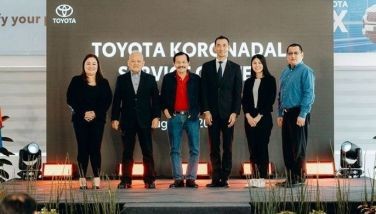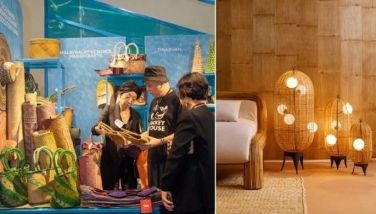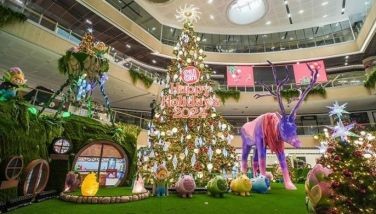Sustainable investments needed

If you still don’t believe that climate change is real, then look around you.
In the past weeks, the country has been battered by strong winds and waves caused by tropical storms. At a time when the Philippines is supposed to be experiencing the El Niño phenomenon, we are getting too much rain.
Streets get flooded despite flood control and drainage projects being undertaken by government. Coastal communities have to evacuate residents every time there is a storm surge. Landslides cause massive destruction of homes and even claim lives when these housing projects should not have been located in these landslide-prone areas in the first place.
How is the Philippine government doing to make sure that investments go to economic activities that are sustainable and in critical infrastructure and coastal management that will help mitigate climate-related risks?
At the Asian Leaders Sustainable Development Program held in Oxford’s Blavatnik School of Government, commissioner Kelvin Lester Lee of the Securities and Exchange Commission (SEC) called on investors and government to work together more closely to meet investment targets for sustainable projects that help fight climate change.
He cited a 2017 report from the Asian Development Bank on the need for Southeast Asia to invest $3.1 trillion up to 2030 to build infrastructure that can respond to climate change.
Lee also emphasized the need to establish and implement credible frameworks such as taxonomies for sustainable finance, which is a criteria that provides the basis for evaluating whether a financial asset will support the United Nations’ sustainable development goals. Lee is a board member of the ASEAN Taxonomy Board.
Lee is involved in crafting a Philippine taxonomy for sustainable finance to define specific activities as green and sustainable. He said the Philippine government, business sector, and other stakeholders are working to deepen capital markets, boost investor confidence, encourage market participation and enhance financial inclusion for sustainable project.
He added that the country also needs to utilize public funds, catalyze private capital and leverage technologies to fast-track the development of green finance and sustainable infrastructure.
In his talk at Oxford, Lee explained that when it comes to sustainable finance as a baseline, two things urgently need to be done: first, establish and implement credible frameworks like the ASEAN Taxonomy that helps ASEAN countries categorize, identify, and track sustainable projects and economic activities; and second, increasing actual funding for investments in low-carbon projects such as renewable energy, coal phase outs, green design and infrastructure, as well as products and technologies that reduce waste and pollution.
Lee also stressed that net zero targets can be achieved with more actual funding, instead of mere pledges, into low-carbon investments. He said that the UN Climate Change Conference has set a target to reduce global carbon emissions by 45 percent in 2030, and for zero carbon emissions by 2050 but these can only be achieved if “we put in enough funding and investments into renewable energy sources, and other projects that reduce carbon emissions starting now until the next 20 to 30 years.”
Bulacan’s lifestyle hub
The Philippine Chamber of Commerce and Industry (PCCI) has identified Bulacan province as the next growth area not only due to its adequate labor force and proximity to the National Capital Region, but also because of the big-ticket infrastructure projects being undertaken by the private sector and the government.
One of the flagship infrastructure projects under the Build-Build-Build program for instance is the North-South Commuter Rail project that will link Tutuban in Manila to Malolos, Bulacan to Clark. The 38-kilometer railway will pass through Meycauayan, Marilao, Bocaue, Balagtas, Guiguinto and Malolos in Bulacan.
Bulacan also takes pride to being host to the New Manila International Airport as well as to Metro Rail Transit Line 7, a 23-km elevated railway line that begins at San Jose del Monte, Bulacan up to North Avenue in Quezon City. Both projects are being undertaken by San Miguel Corp. (SMC).
One company that is helping transform Bulacan into becoming the country’s next business and lifestyle hub is the Czark Mak (CZM) Group of Companies which recently launched its P2-billion commercial and industrial township in Guiguinto.
Covering an area of over 20 hectares, CZM’s AcroCity is Bulacan’s newest township, a vibrant lifestyle hub that caters to the growing needs not only of the surrounding communities, but even residents of nearby areas including Metro Manila who would want a different staycation experience.
CZM executive vice president Caesar Angelo Wongchuking Jr. said with AcroCity, they are not only constructing properties but also building dreams and forging connections that have the power to transform lives. The group’s vision, he emphasized, is to create a vibrant community at the heart of Bulacan, where businesses thrive, residents flourish, and dreams are realized.
Last Tuesday also saw the groundbreaking of NDW Plaza, which will serve as AcroCity’s community and town center focusing on wellness. It will host, among others, a world-class dialysis center, a diagnostic center, spa, gym, and beauty and other wellness facilities, a bank, and other dedicated retail spaces to complement existing leisure and commercial offerings.
Acrocity’s centerpiece property is Acro Residences, one of the largest business hotels in Bulacan, offering more than 100 well-appointed rooms catering to the growing demand for accommodation in the area.
CZM Group general manager Romy Pagulayan revealed that there are plans to build additional amenities for Acro Residences, such as a pool, even as plans are afoot to put up a dedicated events place offering a venue for outdoor events such as weddings, as well as a park for individuals seeking solace with nature.
There are also plans to construct a residential condominium inside AcroCity.
But what really sets AcroCity apart from other destination hubs is the presence of three unique restaurants that have been attracting customers all the way from Metro Manila.
As part of its commitment to provide diverse culinary experiences, AcroCity partnered with Transcendental Relection Restaurant Group, sister company of CZM, to provide three distinct restaurants. Mighty King Restaurant offers exquisite Chinese cuisine, while Mt Fuji specializes in authentic Japanese dishes. For those seeking a cozy cafe atmosphere, Cafe de Margaux located inside Acro Residences meanwhile provides a range of Filipino comfort food and French-inspired dishes.
These restaurants as well as Acro Residences have become the favorite haven for locators and customers of T12 Polo Industrial Estates within AcroCity, which has 66 warehouses and storage facilities that are available for sale or lease.
Pagulayan explained that the integration of their properties – hotel, restaurants, industrial park, events place, and the town center – not only enhances the lifestyle and convenience of the surrounding communities but also strengthens the township’s position as the new lifestyle hub in Bulacan. These developments, he said, represent AcroCity’s dedication to becoming a well-rounded township development.
For comments, email at [email protected]
- Latest
- Trending






























